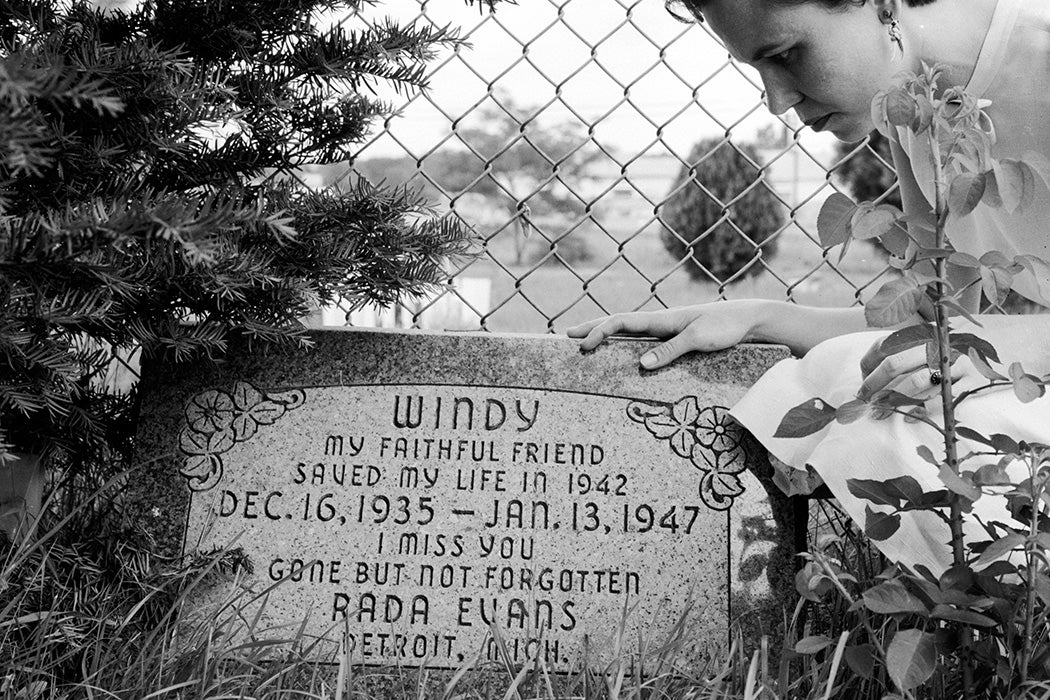The first official pet cemetery in the United States opened in 1896 in Hartsdale, New York, and London’s Hyde Park Pet (originally Dog) cemetery was founded in 1880. These burial grounds were riding the tailwinds of Victorian funerary culture, which had seen the establishment of ever grander resting places for the human deceased.
According to Hilda Kean, “Initially—and later—public cemeteries for animals reflected the form of the commemoration found in contemporary human cemeteries. Thus, in London, funerals were conducted that included attendance by former canine friends.”
The assumption that animals had friends and relationships as humans do (and that their friends would attend as mourners at a funeral) is obviously a projection of human feelings, but it could also be an attempt to demonstrate the gravitas of a pet’s death at a time when animals were still widely treated as disposable. Pet cemeteries served as not just a place to memorialize the dead, but “a space that provides a safe location for humans to convey positive emotion towards this particular animal–human relationship,” in a culture that may otherwise not take such relationships seriously.
Stanley Brandes looks deeper into the meanings conveyed by pet gravestones, using Hartsdale as a source. Early interments tended not to mention the pet’s sex (or even species) and the culture of pet naming tended toward names that were clearly non-human but gender non-specific (Boogles, Snap, and Punch are three examples). After the World War II, names such as Fluffy and Snowy continued to appear, but increasingly, pets were given human (and clearly gendered) names, such as Maggie or Oliver. Their owners also became more explicit about species and breed in their descriptions on the graves.
This specificity might be a rise in the individualization of culture and the increasing popularity of pets in general. Brandes records a shift from describing animals as “pet” or “friend” to terms that make them a member of the family: “My Baby,” for instance, or the bereaved describing themselves as “Mom and Dad.” Another characteristic that reinforces symbolic shift is the appearance of full names—given and family—on the grave markers.
“Since the 1980s, dogs, cats, and even birds have acquired the surnames of their owners, as registered on gravestones,” Brandes notes. “This innovation in monument design nearly converts the animals symbolically into blood relatives.”
As well as acquiring their owners’ names, pets also seem to have acquired their religious affiliations, with crosses and stars of David also appearing on graves from the 1980s onward. Bereaved owners have anthropomorphized their pets into full family members.
Pet cemeteries reflect our culture in other ways, too. During a visit to a pet cemetery adjoining a military base, David Mayer Gradwohl found a number of loyal and brave pets. The ways that Rover and Rex were memorialized by their owners demonstrated their connection to service life (some interred dogs had served in the US Army).
“A marker for a dog called Duke incorporates his master’s dog tags, a poetic gesture indeed, and several ‘TOMBS OF THE UNKNOWN PET’ borrow a concept from the military,” Gradwohl writes.
Weekly Newsletter
Whether one regards this pet culture as mawkish sentimentality or simply an honest reflection of the meaning of pets in their owners’ lives, it’s not simply an American or Western shift. Pet memorial rites also began to gain currency in Japan in the 1970s. Pet spirits came to be regarded as loving rather than vengeful, and their recognition in Buddhist pet cemeteries demonstrated this move.
In a final twist, while the Ramones sang “I don’t want to be buried in a pet sematary,” in truth some people do want to be interred with their pets. Paradoxically, while many human graveyards forbid animal interments, pet cemeteries don’t forbid human burials. Hartsdale already contains the remains of a number of pet owners, and Brandes interviewed one woman who wanted her ashes to be placed with her cat.
We want to commemorate the people we love, and when we love our pets, they become part of our commemoration culture.







